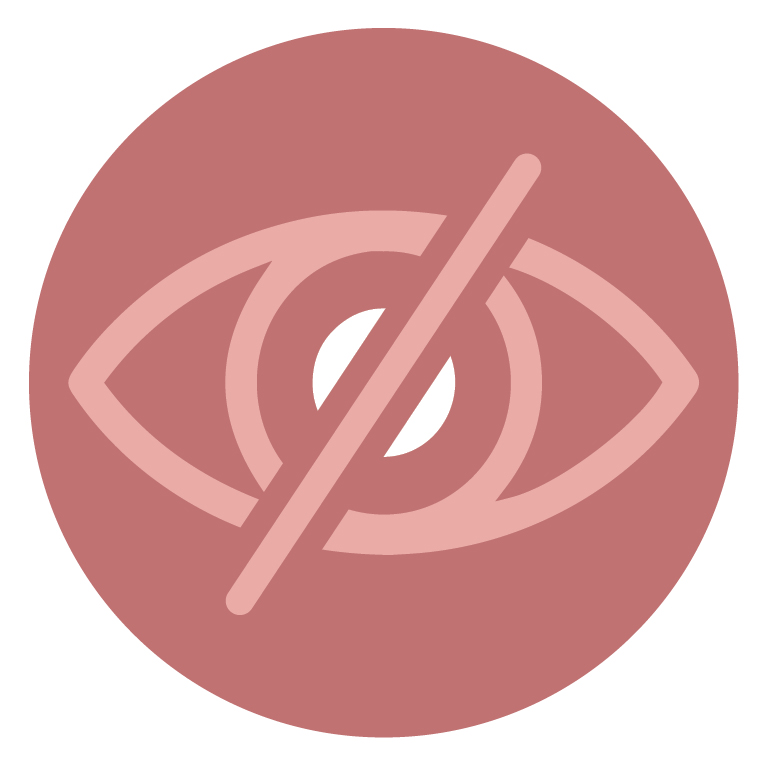Understanding the peer review process
The peer review process starts once you have submitted your paper to The Primary Education Journal.
After submission, your paper will be sent for assessment by independent experts in your field. The reviewers are asked to judge the validity, significance, and originality of your work.
Below we expand on what peer review is, and how it works.
What is peer review? And why is important?

Peer review is the independent assessment of your research paper by experts in your field. The purpose of peer review is to evaluate the paper’s quality and suitability for publication.
As well as peer review acting as a form of quality control for academic journals, it is a very useful source of feedback for you. The feedback can be used to improve your paper before it is published.
So at its best, peer review is a collaborative process, where authors engage in a dialogue with peers in their field, and receive constructive support to advance their work.
Why is peer review important?
Peer review is vitally important to uphold the high standards of scholarly communications, and maintain the quality of individual journals. It is also an important support for the researchers who author the papers.
Every journal depends on the hard work of reviewers who are the ones at the forefront of the peer review process. The reviewers are the ones who test and refine each article before publication. Even for very specialist journals, the editor can’t be an expert in the topic of every article submitted. So, the feedback and comments of carefully selected reviewers are an essential guide to inform the editor’s decision on a research paper.
There are also practical reasons why peer review is beneficial to you, the author. The peer review process can alert you to any errors in your work, or gaps in the literature you may have overlooked.
Researchers consistently tell us that their final published article is better than the version they submitted before peer review. 91% of respondents to a Sense about Science peer review survey said that their last paper was improved through peer review. A Taylor & Francis study supports this, finding that most researchers, across all subject areas, rated the contribution of peer review towards improving their article as 8 or above out of 10.
Choose the right journal for your research: Think. Check. Submit

We support Think. Check. Submit., an initiative launched by a coalition of scholarly communications organizations. It provides the tools to help you choose the right journal for your work.
Think. Check. Submit. was established because there are some journals which do not provide the quality assurance and services that should be delivered by a reputable journal. In particular, many of these journals do not make sure there is thorough peer review or editor feedback process in place.
That means, if you submit to one of these journals, you will not benefit from helpful article feedback from your peers. It may also lead to others being skeptical about the validity of your published results.
You should therefore make sure that you submit your work to a journal you can trust. By using the checklist provided on the Think. Check. Submit. website, you can make an informed choice.
Every full research article published in The Primary Education Journal has been through peer review, as outlined in the aims & scope information. This means that the article’s quality, validity, and relevance has been assessed by independent peers within the research field.
We believe in the integrity of peer review with The Primary Education Journal, ascribing to the following statement:
All published research articles in this journal have undergone rigorous peer review, based on initial editor screening, anonymous refereeing by independent expert referees, and consequent revision by article authors when required.
Different types of peer review
Peer review takes different forms and each type has pros and cons. The type of peer review model used will often vary between journals. So, check your chosen journal’s peer-review policy before you submit, to make sure you know what to expect and are comfortable with your paper being reviewed in that way.
The Primary Education Journal uses double-anonymous peer review as the type of peer review.
Double-anonymous peer review
In this model, which is also known as ‘double-blind review’, the reviewers don’t know that you are the author of the article. And you don’t know who the reviewers are either. Double-anonymous review is particularly common in humanities and some social sciences’ journals.
If you are submitting your article for double-anonymous peer review to The Primary Education Journal, make sure you know how to make your article anonymous.

Pros and cons of double-anonymous peer review
In this model the reviewers don’t know that you are the author of the article. And you don’t know who the reviewers are either.
Many researchers prefer double-anonymous review because they believe it will give their paper a fairer chance than other review models. It can avoid the risk of a paper suffering from the unintended bias of reviewers who know the seniority, gender, or nationality of a paper’s author.
However, even if you’ve anonymized your paper the reviewers may not be able to avoid discerning your identity, especially if you work in a very specialized field. They might have heard you present the same ideas at a conference, or recognize your writing style.
| Pros | Cons |
|---|---|
| Less risk of conscious or unconscious bias from either the reviewer, or the author | It’s not possible to guarantee the anonymity of the author. For example, if the reviewer was already familiar with their work or had heard that someone was working on a particular topic |
| Reviewers can feel more protected from criticism of their review | Some reviewers may use their anonymity to write reviews that are rushed, rude, or unfair, which they might not do if their name was being associated with the comments |
Peer review follows a number of steps, beginning with submitting your article to a journal.
Step 1: Editor assessment
When your manuscript arrives at the journal’s editorial office it will receive an initial desk assessment by the journal’s editor. They will check that it’s broadly suitable for the journal.
They will ask questions such as:
- Is this the right journal for this article?
- Does the paper cover a suitable topic according to the journal’s aims & scope?
- Has the author followed the journal’s guidelines in the instructions for authors? They will check that your paper meets the basic requirements of the journal, such as word count, language clarity, and format.
- Has the author included everything that’s needed for peer review? They will check that there is an abstract, author affiliation details, any figures, and research-funder information.
- Does it make a significant contribution to the existing literature?

If your article does pass the initial assessment, it will move to the next stage, and into peer review.
“As an editor, when you first get a submission, at one level you’re simply filtering. A fairly small proportion do not get sent out by me for review. Sometimes they simply fall outside the scope of the journal.”
– Michael Reiss
AI in the peer review process
The innovative use of artificial intelligence is helping to make peer review more efficient. Traditionally, one of the most time-consuming elements of the process for editors is identifying the right experts to invite to review each paper. Today, we use a number of AI-based tools that specialize in matching submitted manuscripts to subject experts, which means your article is being read by the people who can provide the feedback you need much quicker than was possible before.
For example, Clarivate’s Reviewer Locator searches the publication history of more than 28 million researchers, to provide quick recommendations of possible reviewers. The tool also flags potential organizational and co-author competing interests, helping to support research integrity.

Please note that when you submit your research to The Primary Education Journal it will not be uploaded to Generative AI tools by reviewers to analyze or summarize your work. Our guidelines for peer reviewers specifically state that they must not upload unpublished manuscripts or project proposals, including any associated files, images or information, into AI tools.
Step 2: First round of peer review
Next, the editor will find and contact other researchers who are experts in your field, and will ask them to review the paper. A minimum of two independent reviewers is normally required for every research article.
The reviewers will be asked to read and comment on your article. They may also be invited to advise the editor whether your article is suitable for publication in that journal.
So, what are the reviewers looking for?
This depends on the subject area, but they will be checking that:
- Your work is original or new.
- The study design and methodology are appropriate and described so that others could replicate what you have done.
- You’ve engaged with all the relevant current scholarship.
- The results are appropriately and clearly presented.
- Your conclusions are reliable, significant, and supported by the research.
- The paper fits the scope of the journal.
- The work is of a high enough standard to be published in the journal.
If you have not already shared your research data publicly, peer reviewers may request to see your datasets, to support validation of the results in your article.
Once the editor has received and considered the reviewer reports, as well as making their own assessment of your work, they will let you know their decision. The reviewer reports will be shared with you, along with any additional guidance from the editor.
If you get a straight acceptance, congratulations, your article is ready to move to publication. But, please note, that this isn’t common. Very often, you will need to revise your article and resubmit it. Or it may be that the editor decides your paper needs to be rejected by that journal.
Please note that the final editorial decision on a paper and the choice of who to invite to review is always the editor’s decision.

Step 3: Revise and resubmit
It is very common for the editor and reviewers to have suggestions about how you can improve your paper before it is ready to be published. They might have only a few straightforward recommendations (‘minor amendments’) or require more substantial changes before your paper will be accepted for publication (‘major amendments’). Authors often tell us that the reviewers’ comments can be extremely helpful, to make sure that their article is of a high quality.
During this stage of the process you will have time to amend your article based on the reviewers’ comments, resubmitting it with any or all changes made. Make sure you know how to respond to reviewer comments, we cover this in the next section.Once you resubmit your manuscript the editor will look through the revisions. They will often send it out for a second round of peer review, asking the reviewers to assess how you’ve responded to their comments.After this, you may be asked to make further revisions, or the paper might be rejected if the editor thinks that the changes you’ve made are not adequate. However, if your revisions have now brought the paper up to the standard required by that journal, it then moves to the next stage.
If you do not intend to make the revisions suggested by the journal and resubmit your paper for consideration, please make sure you formally withdraw your paper from consideration by the journal before you submit elsewhere.
Step 4: Accepted
And that’s it, you’ve made it through peer review. The next step is production.
How long does peer review take?
Editorial teams work very hard to progress papers through peer review as quickly as possible. But it is important to be aware that this part of the process can take time.
- The first stage is for the editor to find suitably qualified expert reviewers who are available. Given the competing demands of research life, nobody can agree to every review request they receive. It’s therefore not uncommon for a paper to go through several cycles of requests before the editor finds reviewers who are both willing and able to accept.
- Then, the reviewers who do accept the request, have to find time alongside their own research, teaching, and writing, to give your paper thorough consideration.
Please do keep this in mind if you don’t receive a decision on your paper as quickly as you would like. If you’ve submitted your paper via an online system, you can use it to track the progress of your paper through peer review. Otherwise, if you need an update on the status of your paper, please get in touch with the editor.
The Primary Education Journal and many journals publish key dates alongside new articles, including when the paper was submitted, accepted, and published online. While you’re at the stage of choosing a journal to submit to, take a look at these dates for a range of recent articles published in the journals you’re considering. While each article will have a slightly different timeline, this may help you to get an idea of how long publication may take.
How to respond to reviewer comments
If the editor asks you to revise your article, you will be given time to make the required changes before resubmitting.
- When you receive the reviewers’ comments, try not to take personal offence to any criticism of your article (even though that can be hard).
- Some researchers find it helpful to put the reviewer report to one side for a few days after they’ve read it for the first time. Once you have had chance to digest the idea that your article requires further work, you can more easily address the reviewer comments objectively.
- When you come back to the reviewer report, take time to read through the editor and reviewers’ advice carefully, deciding what changes you will make to your article in response. Taking their points on board will make sure your final article is as robust and impactful as possible.
Please make sure that you address all the reviewer and editor comments in your revisions.

It may be helpful to resubmit your article along with a two-column grid outlining how you’ve revised your manuscript. On one side of the grid list each of the reviewers’ comments and opposite them detail the alterations you’ve made in response. This method can help you to order your thoughts, and clearly demonstrate to the editor and reviewers that you’ve considered all of their feedback.
What if you don’t agree with the reviewers’ comments?
If there’s a review comment that you don’t agree with, it is important that you don’t ignore it. Instead, include an explanation of why you haven’t made that change with your resubmission. The editor can then make an assessment and include your explanation when the amended article is sent back to the reviewers.
You are entitled to defend your position but, when you do, make sure that the tone of your explanation is assertive and persuasive, rather than defensive or aggressive.
– Gary McCulloch
What if my paper is rejected?
Nobody enjoys having their paper rejected by a journal, but it is a fact of academic life. It happens to almost all researchers at some point in their career. So, it is important not to let the experience knock you back. Instead, try to use it as a valuable learning opportunity.
Take time to understand why your paper has been rejected
If a journal rejects your manuscript, it may be for one of many reasons. Make sure that you understand why your paper has been rejected so that you can learn from the experience. This is especially important if you are intending to submit the same article to a different journal.
Are there fundamental changes that need to be made before the paper is ready to be published, or was this simply a case of submitting to the wrong journal? If you are unsure why your article has been rejected, then please contact the journal’s editor for advice.

Some of the common reasons manuscripts are rejected
- The author has submitted their paper to the wrong journal: it doesn’t fit the aims & scope or fails to engage with issues addressed by the journal.
- The manuscript is not a true journal article, for instance it is too journalistic or clearly a thesis chapter.
- The manuscript is too long or too short.
- There is poor regard of the journal’s conventions, or for academic writing in general.
- Poor style, grammar, punctuation or English throughout the manuscript.
- The manuscript does not make any new contribution to the subject.
- The research has not been properly contextualized.
- There is a poor theoretical framework used.
- The manuscript is poorly presented.
- The manuscript is libelous or unethical.
Why you should become a peer reviewer
When you’re not in the middle of submitting or revising your own article, you should consider becoming a reviewer yourself.
There are many demands on a researcher’s time, so it is a legitimate question to ask why some of that precious time should be spent reviewing someone else’s work. How does being a reviewer help you in your career? Here are some of the benefits.
- Keep up with the latest thinking
As a reviewer you get an early view of the exciting new research being done in your field. Not only that, peer review gives you a role in helping to evaluate and improve this new work.
- Improve your own writing
Carefully reviewing articles written by other researchers can give you an insight into how you can make your own work better. Unlike when you are reading articles as part of your research, the process of reviewing encourages you to think critically about what makes an article good (or not so good). This could be related to writing style, presentation, or the clarity of explanations.
- Boost your career
While a lot of reviewing is anonymous, there are schemes to recognize the important contribution of reviewers. You can also include reviewing work on your resume. Your work as a reviewer will be of interest to appointment or promotion committees who are looking for evidence of service to the profession.
- Become part of a journal’s community
Many journals act as the center of a network of researchers who are in conversation about key themes and developments in the field. Becoming a reviewer is a great way to get involved with that group. This can give you the opportunity to build new connections for future collaborations. Being a regular reviewer may also be the first step to becoming a member of the journal’s editorial board.

Your research community needs you
Of course, being a reviewer is not just about the benefits it can bring you. Surveys found that these are the top 3 reasons why researchers choose to review:
- Being an active member of the academic community
Peer review is the bedrock of academic publishing. The work of reviewers is essential in helping every piece of research to become as good as it can be. By being a reviewer, you will play a vital part in advancing the research area that you care about.
- Reciprocating the benefit
Researchers regularly talk about the benefits to their own work from being reviewed by others. Gratitude to the reviewers who have improved your work is a great motivation to make one’s own contribution of service to the community.
- Enjoying being able to help improve papers
Reviewing is often anonymous, with only the editor knowing the important contribution you’ve made. However, many reviewers attest that it is work that makes them feel good, knowing that they have been able to support a fellow researcher.
How to be an effective peer reviewer
Our guide to becoming a peer reviewer covers everything you need to know to get started, including:
- How to become a peer reviewer
- Writing review reports: step-by-step
- Ethical guidelines for peer reviewers
- Reviewer recognition
– Mike J. Smith
Further reading
We hope you’ve found this short introduction to peer review helpful. For further useful advice check out the following resources.
- Peer Review: the nuts and bolts
A guide to peer review written by early career researchers, for early career researchers and published by Sense about Science. - A guide to becoming a peer reviewer
An overview of what’s involved in becoming a reviewer for The Primary Education Journal. - Ethical guidelines for peer reviewer
Produced by COPE, the Committee on Publication Ethics, setting out the standards all peer reviewers should follow. - Using peer review effectively: quick tips
Advice available to staff and students at institutions with a Vitae membership.
